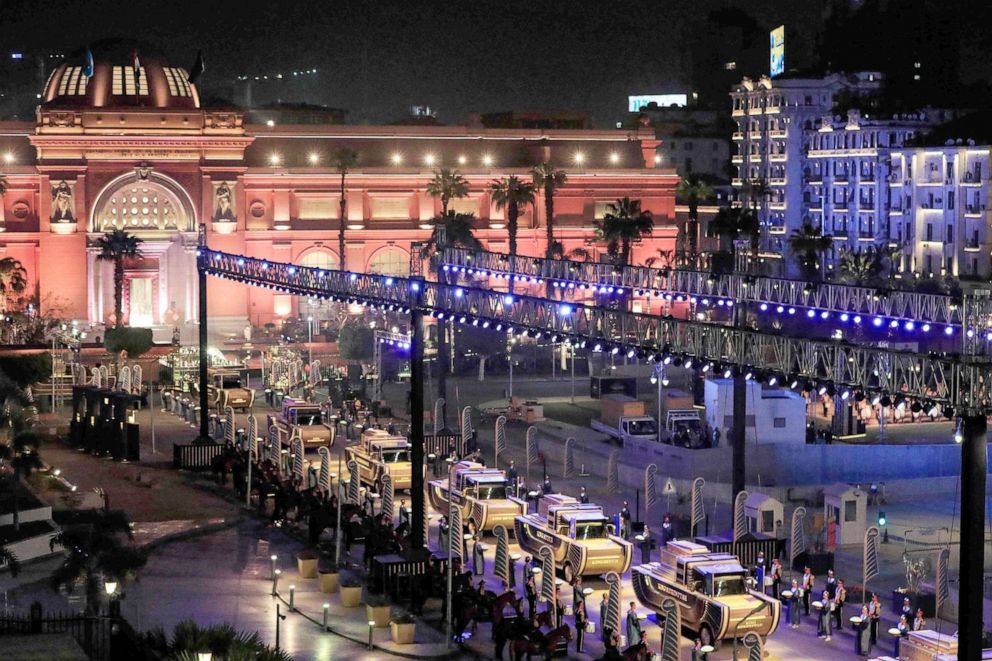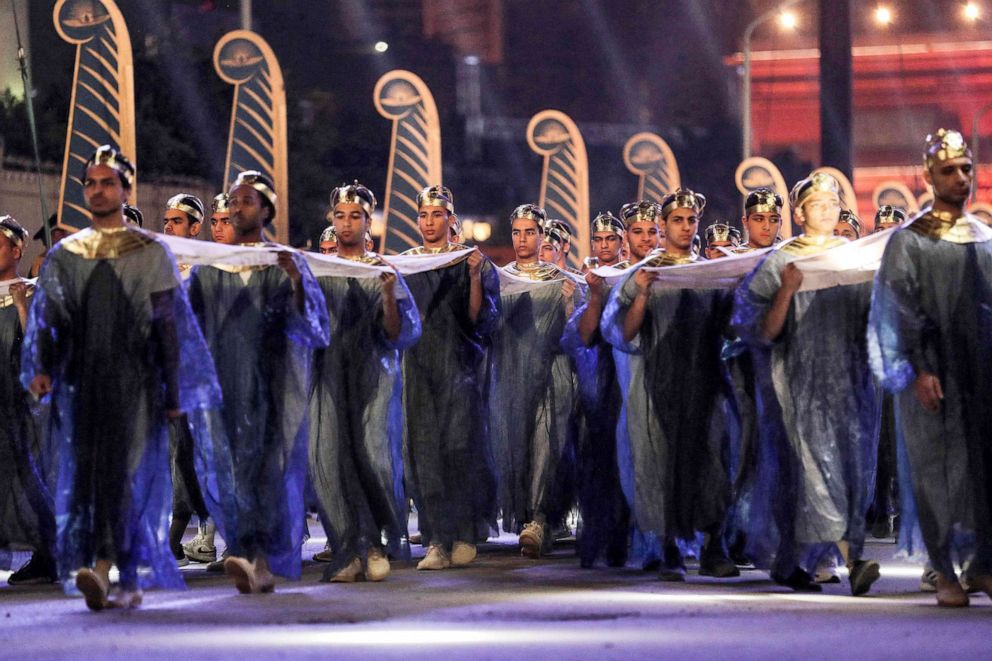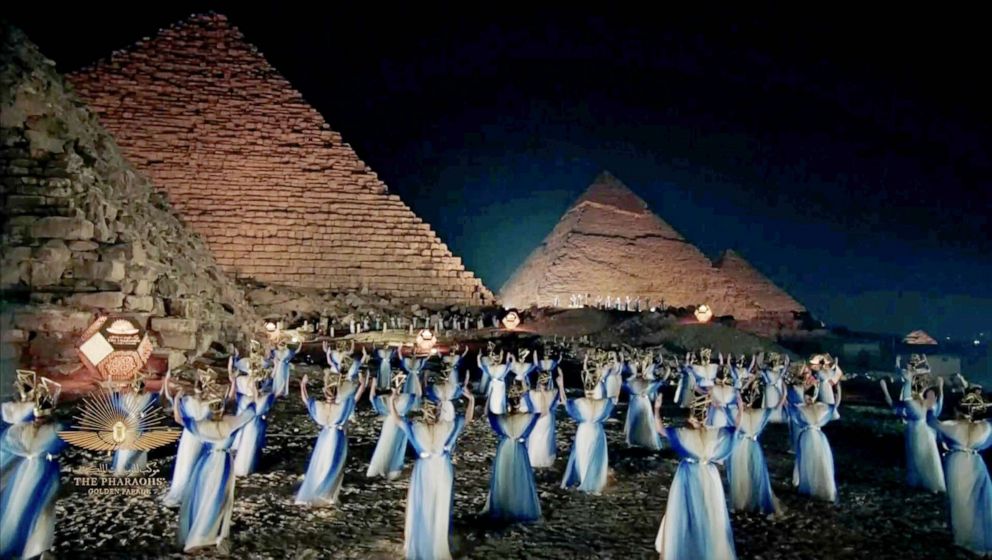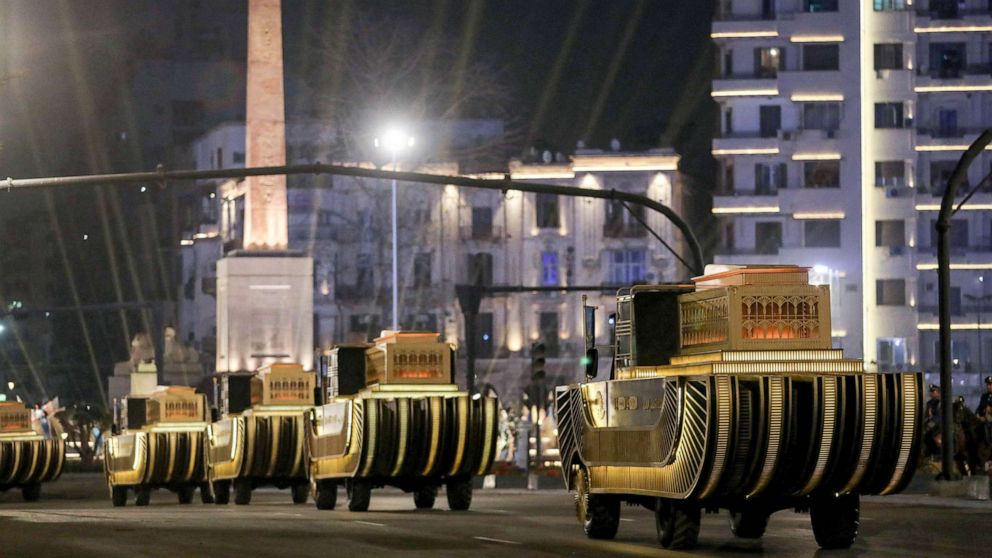Egyptian mummies pass through Cairo in parade worthy of royals
Nearly a century and a half after entering Egypt labeled as salted fish due to their obscurity, nearly two dozen Egyptian mummies were celebrated in a grand parade in Cairo on Saturday.
Twenty-two mummies, 18 kings and four queens, were treated as royals as they were conveyed from the 120-year-old Egyptian Museum in Cairo's central Tahrir Square to the newly inaugurated National Museum of Egyptian Civilization in the old Islamic city of Fustat.
Among the mummies were that of Ramses II, a New Kingdom ruler whose reign lasted for 67 years and who signed the world's first-known peace treaty; Hatshepsut, who defied gender norms to become a queen in the 18th dynasty era; and Seqenenra Taa, who is best known for initiating a liberation war against the Hyksos.
Many of the mummies on display had made an arduous journey to Saturday's parade after being exhumed from the Deir El-Bahari cachette in Luxor's West Bank in 1881.

They were put on a boat that sailed for three days, all the way from Luxor to Cairo, but their arrival in the capital city did not mark the end of their troubles. At the time, customs inspection in the capital was mandatory and the man in charge was at a loss to find a legal definition for the mummies.
"The customs authority eventually agreed to let them in, but only under a label that they were salted fish," renowned Egyptologist Zahi Hawass told ABC News.
On Saturday, the contrast could not be starker.
The mummies were placed in hydrogen capsules for protection and carried by specially decorated vehicles, with vintage horse-drawn carriages and men in ancient costumes guiding them, and a drum-beating military band building up excitement.
The mummies had their names inscribed on the sides and front of the vehicles in ancient Egyptian hieroglyphs and Arabic, signaling the start of the procession by moving in chronological order, led by Seqenenra Taa of the 17th dynasty.


Historic square
A 19-meter-high Ramses II obelisk surrounded by four sphinxes adorned historic Tahrir Square, which was given a facelift in anticipation of the parade. It had been scheduled to take place last year, but was delayed due to the COVID-19 pandemic.
As the vehicles moved, they encircled the obelisk and continued their 4.5-km journey to the National Museum of Egyptian Civilization, their final resting place. Roads were sealed off as the motorcade passed through empty streets before being greeted by a 21-gun salute upon arrival.

The mummies will go on display at a royal hall built to accommodate them. It will open its doors to visitors on April 18.
"This majestic scene is a further proof of the greatness of Egyptian people -- the guardians of this unique civilization that extends into the depths of history," Egyptian President Abdel Fattah El Sisi, who welcomed the mummies' arrival at the museum, said on Facebook.




